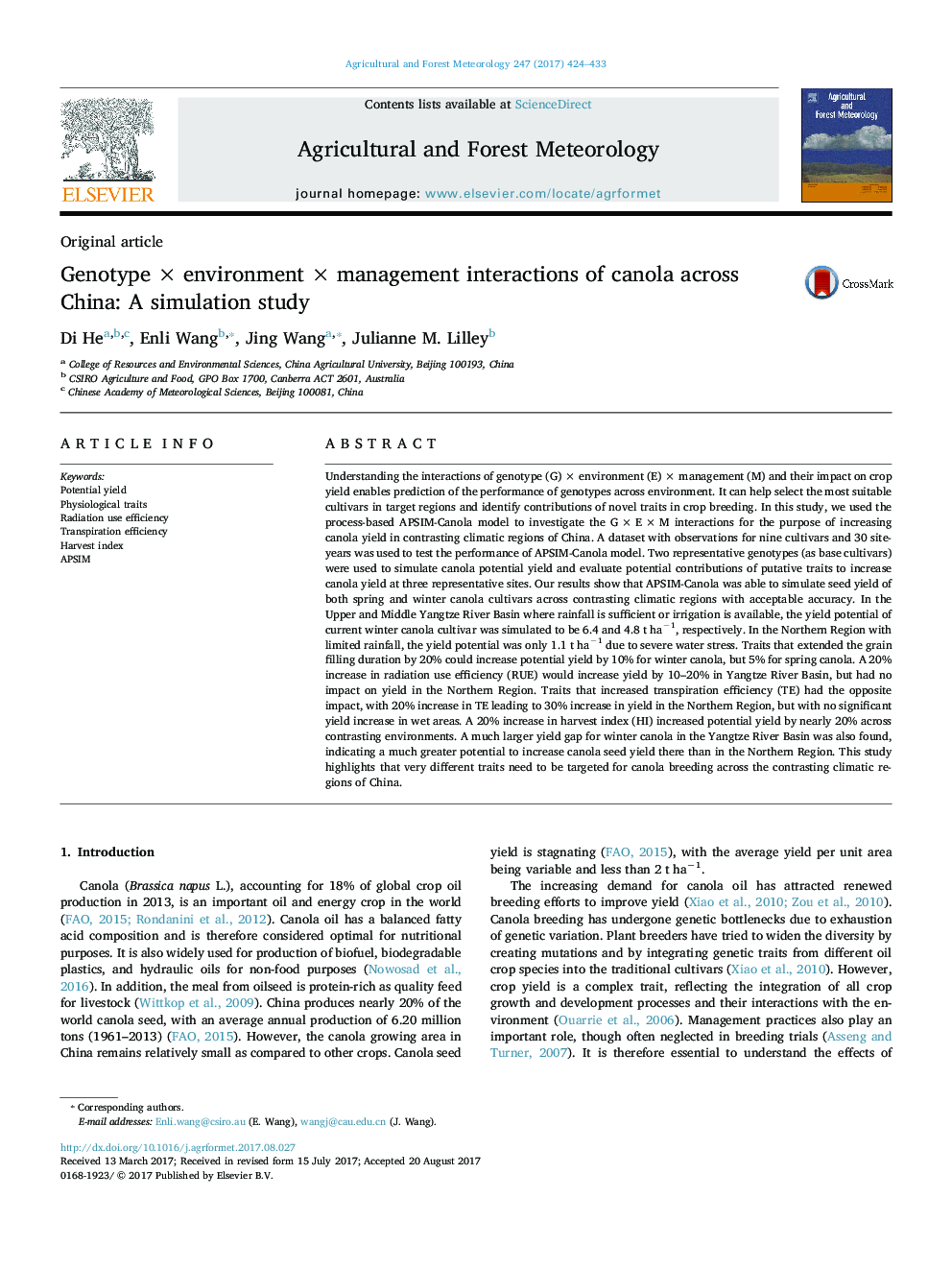| کد مقاله | کد نشریه | سال انتشار | مقاله انگلیسی | نسخه تمام متن |
|---|---|---|---|---|
| 6457820 | 1420854 | 2017 | 10 صفحه PDF | دانلود رایگان |

- Modelling reveals larger yield gap of winter than spring canola in China.
- Their yield potential (gap) is 6.4(4.3) t haâ1 and 2.9(0.4) t haâ1 respectively.
- Trait increasing transpiration efficiency increases yield only in dry regions.
- Trait increasing radiation use efficiency increases yield only in wet regions.
- Different selection strategies are needed for canola breeding across China.
Understanding the interactions of genotype (G) Ã environment (E) Ã management (M) and their impact on crop yield enables prediction of the performance of genotypes across environment. It can help select the most suitable cultivars in target regions and identify contributions of novel traits in crop breeding. In this study, we used the process-based APSIM-Canola model to investigate the G Ã E Ã M interactions for the purpose of increasing canola yield in contrasting climatic regions of China. A dataset with observations for nine cultivars and 30 site-years was used to test the performance of APSIM-Canola model. Two representative genotypes (as base cultivars) were used to simulate canola potential yield and evaluate potential contributions of putative traits to increase canola yield at three representative sites. Our results show that APSIM-Canola was able to simulate seed yield of both spring and winter canola cultivars across contrasting climatic regions with acceptable accuracy. In the Upper and Middle Yangtze River Basin where rainfall is sufficient or irrigation is available, the yield potential of current winter canola cultivar was simulated to be 6.4 and 4.8 t haâ1, respectively. In the Northern Region with limited rainfall, the yield potential was only 1.1 t haâ1 due to severe water stress. Traits that extended the grain filling duration by 20% could increase potential yield by 10% for winter canola, but 5% for spring canola. A 20% increase in radiation use efficiency (RUE) would increase yield by 10-20% in Yangtze River Basin, but had no impact on yield in the Northern Region. Traits that increased transpiration efficiency (TE) had the opposite impact, with 20% increase in TE leading to 30% increase in yield in the Northern Region, but with no significant yield increase in wet areas. A 20% increase in harvest index (HI) increased potential yield by nearly 20% across contrasting environments. A much larger yield gap for winter canola in the Yangtze River Basin was also found, indicating a much greater potential to increase canola seed yield there than in the Northern Region. This study highlights that very different traits need to be targeted for canola breeding across the contrasting climatic regions of China.
Journal: Agricultural and Forest Meteorology - Volume 247, 15 December 2017, Pages 424-433